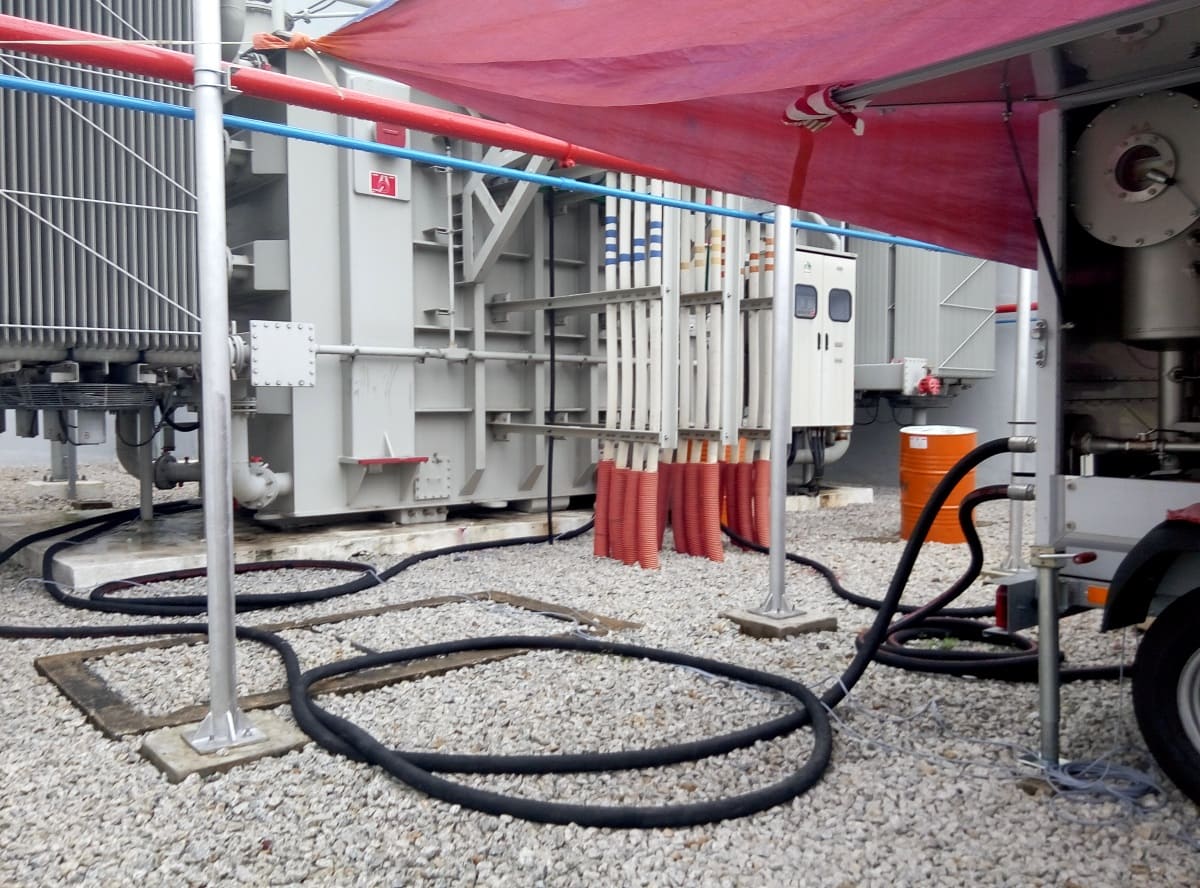Transformer oil drain is an operation, that no transformer can do without. In this article we will look what types of it do exist and when it is performed
Full and Partial Transformer Oil Drain
According to the degree of emptying of the tank transformer oil drain can be full and partial. Full drain is carried out during maintenance or repair of the transformer, when the oil blocks access to the parts that require attention.
Partial drain foresees oil removal to the level of the upper yoke of the magnetic circuit.
If the oil is suitable for further use, a partial drain is performed for the inspection of the transformer with the lifting of the active part and for defecting.
Depending on the power of the transformer, the oil is drained through a special tap or a hole for draining and taking samples. Draining is carried out into a previously prepared container through oil lines (rubber hoses).
Transformer Oil Drain for Sampling
Small portions of oil are drained from the transformer in the form of samples and then subjected to a complete or reduced analysis. Using the analysis, it is possible to determine not only the current state of the oil and the need to replace it, but also diagnose up to 70% of possible defects in the transformer insulation system
Drain When Changing the Oil
Full drain of transformer oil is performed when the analysis of the taken samples has shown its unsuitability for further operation. A guideline for replacement is a decrease in surface tension to values less than 10 mN / m and an increase in acid number to a value of 1 mg KOH / g or more.
After draining the oil, the inner parts of the transformer are flushed from contamination with special flushing fluids. And only after that new oil is poured. But, no matter how thoroughly the flushing is carried out, some of the contaminants will still get into the new oil.
Therefore, the preferred method is to restore the properties of the oil without draining from the transformer tank. When connecting the CMM-R GlobeCore unit to the transformer, a closed circulation loop is formed: old oil is taken from the transformer and enters the unit for regeneration, and the recovered oil is returned back to the transformer. In this case, there is a complete removal of contamination from the transformer. Regeneration is performed on both the operating and de-energized transformer.
Emergency drain of transformer oil
Emergency discharge of transformer oil is carried out into a special oil sump. This is usually a reservoir that is underground and does not allow oil to enter the environment. Oil is pumped out of the reservoir and recycled (utilized or regenerated) is removed.



